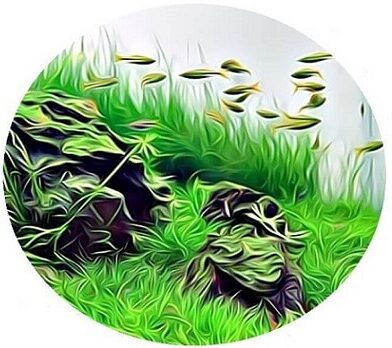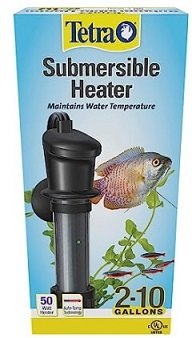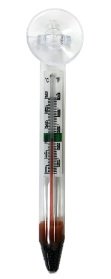Molly Fish: A Comprehensive Guide for Aquarists and Fish Enthusiasts
Resistant and easy to care for, the Molly fish or the common molly fish is one of the most recommended species for beginner aquarists and fish tank lovers. They are a great beginner fish.
With elegant colors in white and black tones (black molly), this fish adds a touch of charm to any environment and gets along well with many species.
With many positive characteristics, it’s no surprise that Molly fish is so popular.
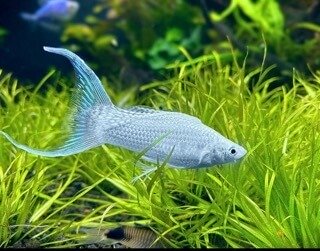
Learn more about the species in this comprehensive article.
Table of Content
One name, several species
Molly fish originated in North or Central America, but today, they have spread to several countries.
Black molly, Common molly, White Molly !
Despite having the same common name, different Molly fish species have different characteristics. Their size, for example, can vary greatly, ranging from 2 inches in some cases to 6 inches sometimes.
Their colors, including black, white, green, or bluish, can also differ. The most common color of the species is black. However, it is easy to find fish in different shades, often with white spots or dots on their bodies. In some cases, we even find completely white molly fish.
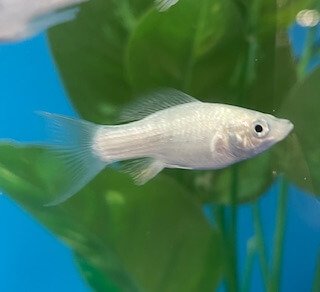
Regardless of the color, they are always beautiful species.
Their body is round and robust, and their fins are short.
Their life spam is up to 5 years.
Water Parameters
Molly fish are resistant and can survive in environments with very different characteristics but the ideal pH and Temperature are as follow.
What is the Ideal Temperature for Molly Fish
The ideal temperature for Molly fish is from 64°F to 82°F. They tolerate colder or warmer water without a problem.
What is the Ideal Water pH for Molly Fish
The ideal water pH for Molly fish is from 7.0 to 8.5. They are not very pH demanding but prefer a more neutral pH level.
To learn about how to measure and adjust your water pH, check this How-To with videos and pictures.
What is the Ideal Water Hardness for Molly Fish
The ideal water hardness for molly fish is about 15 to 30 dGH. They can tolerate higher or lower hardness but avoid drastic changes. Just a reminder that you can easily reduce or increase your water hardness. Read more here.
Do you want to know which accessories you need? Check this list of really needed fish tank accessories.
What aquarium size do Molly fish need?
Molly fish need at least a 20-gallon aquarium. This size would be suitable for up to four Molly.
Depending on the species (big ones), a 30-gallon tank might be better.
There are different fish tank types and sizes and you can read more about them here.
Each additional molly will need about 3 gallons to live comfortably.
You can use my “How Many Fish in a Tank” Online Calculator to help you to figure out how many of them you can have in your tank.
Feeding your Molly or Molly Fry
Feeding your molly is not usually a problem. They are Omnivores, and they eat all kinds of food.
They typically like and get well with typical dry food. Live or frozen food like, for example, Frozen Bloodworms are excellent for their health one or two times per week.
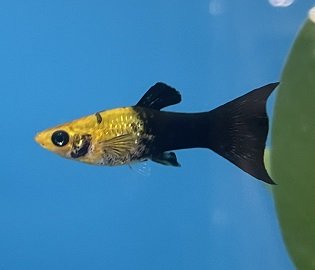
They usually eat their food from the water’s surface – they are not considered bottom-dwelling fish.
Remember that aquatic pets (fish, snails, and shrimps) don’t eat much; leftover fish food can be harmful.
In this article I explain how much food to give them: learn More Here.
Tip: For beginner aquarists who want advice on how to feed their fish, it’s worth using the two-minute rule.
It works like this: add some food and count for two minutes.
If there are still flakes in the water after this time, remove the excess and keep an eye on it next time.
Best food for molly fish
The best food for molly fish is a combination of dry food 6 days per week and blood worms one time per week.
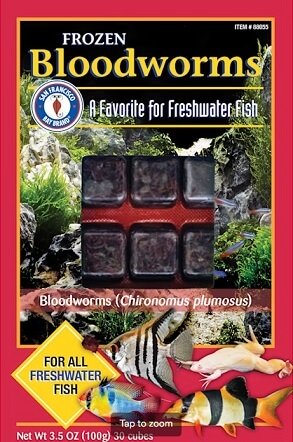
Dry Food that I like to use
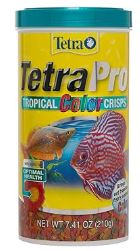
As mollies are omnivores, they like vegetables in their nutrition. Therefore, it is common to observe them eating & cleaning the aquarium while enjoying the algae on the glass.
Fishes compatible with molly
Which Fishes are compatible with molly is a common question. Mollies are incredibly peaceful and do not tend to create problems with other types of fish.
They live well together, and keeping more than one molly fish in the same aquarium is advisable but not necessary.
Just be careful with the male and female ratio. Males can be more aggressive, especially if they are in excess.
To avoid problems, I suggest one male for every three females.
Good friends:
Some good choices of fish compatible with Molly include:
- Cherry Barbs
- Corydoras
- Catfish
- Danios
- Dwarf Gourami
- Harlequin Rasbora
- Platies
- Roseate Barbs
- Tetras
- Yo-yo Loaches
- Zebra Loaches
Are Mollies Schooling Fish?
Well, Mollies are actually not schooling fish. Although they live well in groups, they don’t need to be together with other mollies. They won’t get stressed if they are alone.
Do Molly fish need a water filter?
Yes! A water filter is essential to keep your tank water healthy and clean.
Learn more about water filter types here.
“Hang on” filters are often a great option.
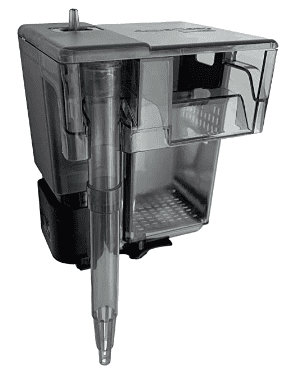
Do Molly fish need a water thermostat?
Yes, molly fish need a water thermostat. Stable temperature is a must.
They are ok with a little bit of colder water or warmer water, but you should avoid significant and fast temperature variations and that is why you must have a thermometer and a thermostat.
You should have a thermometer to know the temperature and an aquarium water heater to warm the water when necessary.
Check these water heater and thermometer.
Molly Typical Behavior
Molly are a peaceful group, but they may show signs of aggression when crowded or surrounded by aggressive tankmates. Therefore, it is crucial that their tank is large enough and that they have suitable matching tanks (more on this later).
It’s easy to identify personalities in active fish like these. Watching them for a while will quickly make you grow attached as you notice their individual differences.
Are molly fish friendly?
Molly fish are very friendly. They are very active, always looking for food and swimming around. They do well with almost all fish. The danger is other fish messing around with them (the opposite). For this reason, research the other fish you currently have or are looking to buy.
Will molly fish eat other fish?
Molly fish will eat other fish if they are very small or fish babies (fry). Mollies are not aggressive and won’t hunt or attack other fish.
How to know if a molly fish is a male or a female?
Young mollies usually look alike. They have enormous eyes and a spindly wriggling tail. They have no notable markings to separate them based on gender.
As they mature, it becomes easier to tell them apart (after 6 to 10 weeks).
Males are usually smaller and more colorful than females.
They have specialized anal fin formatting.
Female molly fish are larger and have triangular-shaped anal fins and a dark gravid spot that shows readiness to mate.
The Secret – How to Breed Molly Fish
Mollies are live breeders, meaning their eggs develop inside their bodies, and at the right time, the female releases live young fish (livebearer fry).
They are one of the easiest groups of fish to breed in captivity and mate regularly.
The conditions in a breeding aquarium must be perfect, and the water (and the tank in general) must be clean.
Raising the temperature a little can help to initiate the mating, but don’t go above 78°F.
Males perform a courtship display for females; when the female is ready to mate, she will allow the male to fertilize her eggs.
A good ratio is to have one male for every four females.
Females often choose to mate with the largest males.
After fertilization, it will take 35-45 days until the young are released.
Larger females can release up to 100 juveniles.
The young must be separated from the adults, or they will be eaten.
One option is to place pregnant mollies in a breeding box before giving birth; the young are free to exit the container through small holes, but the adults are trapped.
A lot of plants also help the little ones hide.
Breeding FAQs
What does a pregnant Molly Fish look like?
A female’s belly will swell and become much larger than usual. This is usually easy to spot, especially when comparing them to other shellfish in the tank. You will notice this belly change.
What are Molly Fish’s babies like, and how do you care for them?
Fry looks like a miniature version of an adult with big black eyes. Colors vary depending on the species.
Keep fry separate from other fish (including their parents) until they are a similar size.
How to: Molly Fish Fry Food?
You can feed molly fish fry using broken flakes until they are big enough to eat the same foods as adults.
Just break the flakes with your fingers and that is it.
At this point, they can be mixed back in with them.
How long are mollies pregnant?
Mollies are pregnant and have a gestation period of about 50 to 60 days from being fertilized to giving birth.
How often do molly fish (mollies) have babies?
Molly fish (mollies) usually have babies from 4 to 6 times per year. The water temperature and stress level are big influencers.
References
Mollies Fish on Wikipedia, here.
Integrated Taxonomic Information System – here.
What to Know About Mollies – Medically Reviewed by Vanesa Farmer, DVM on December 02, 2022 Written by Taylor Wendt here.
What to Read Next
I hope you liked this article.
I suggest you to understand what is Ammonia and how to measure and reduce it as Ammonia will kill your fish. Read More Here.
Another great article is the “Top 13 Easy-to-Grow Plants that will Thrive in your Low-Tech Aquarium” as, soon or later you will want to have plants.
Thank you Very Much. Subscribe to my Blog and I will let you know when we have new articles.
